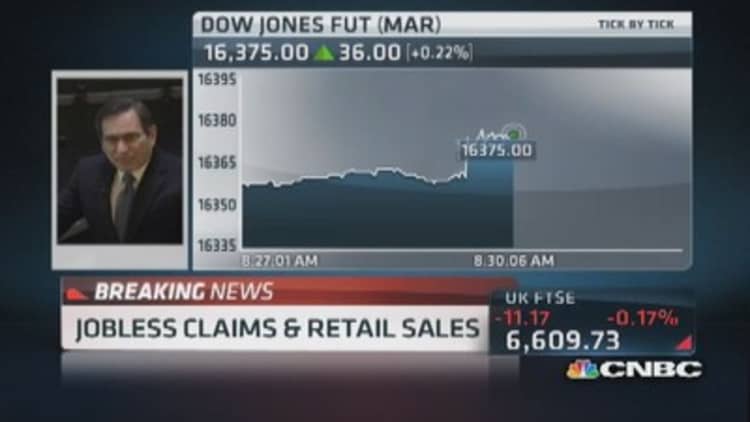The number of Americans filing new claims for unemployment benefits unexpectedly fell to a fresh three-month low last week, suggesting a strengthening in labor market conditions.
Initial claims for state unemployment benefits dropped 9,000 to a seasonally adjusted 315,000, the Labor Department said on Thursday. That was the lowest reading since late November. Claims for the week ended March 1 were revised to show 1,000 more applications received than previously reported.

Economists polled by Reuters had forecast first-time applications for jobless benefits rising to 330,000 in the week ended March 8. The four-week moving average for new claims, considered a better measure of underlying labor market conditions as it irons out week-to-week volatility, fell 6,250 to 330,500, the lowest level since early December.
A Labor Department analyst said no states were estimated. Unseasonably cold weather has slowed job growth in recent months, but the labor market is showing signs of shaking off winter's icy grip.
Nonfarm payrolls increased 175,000 in February. They had risen 129,000 in January and gained 84,000 in December. Economists expect job gains to accelerate in March as temperatures warm up. The claims report showed the number of people still receiving benefits after an initial week of aid fell 48,000 to 2.86 million in the week ended March 1. That was the lowest level since December.
Import prices log big jump
A separate report showed U.S. import prices rose more than expected and recorded their largest gain in a year in February as petroleum soared, but there was little sign of a broad pick-up in imported inflation.
The Labor Department said import prices increased 0.9 percent last month, the biggest rise since February last year. January's import prices were revised to show a 0.4 percent increase rather than the previously reported 0.1 percent gain.
Economists polled by Reuters had forecast import prices rising 0.4 percent in February. In the 12 months through February, import prices fell 1.1 percent, indicating overall imported inflation remained subdued. Import prices excluding petroleum rose 0.2 percent in
February after advancing 0.4 percent the prior month. Compared to February last year, they were down 0.6 percent. Petroleum prices rose 4.4 percent, the largest rise since August 2012.
The Labor Department report also showed export prices increased 0.6 percent in February, the largest rise in a year. That followed 0.2 percent rise in January. In the 12 months through February, export prices fell 1.3 percent.
--By Reuters

